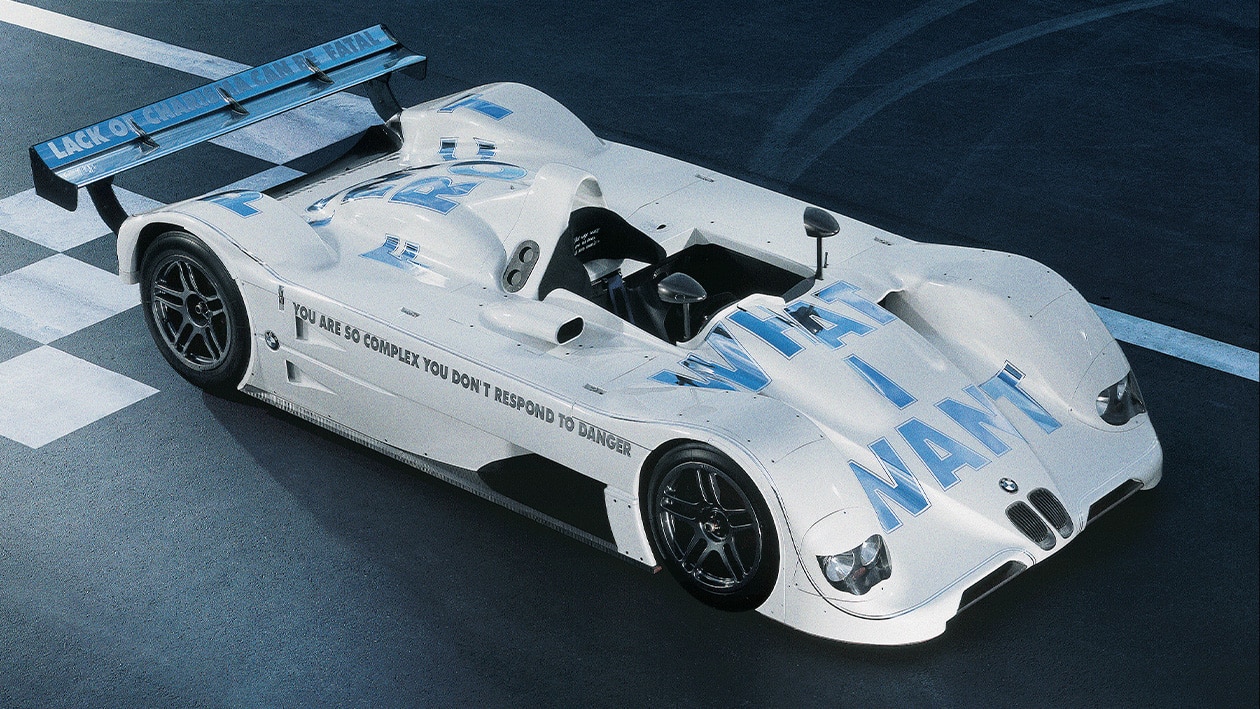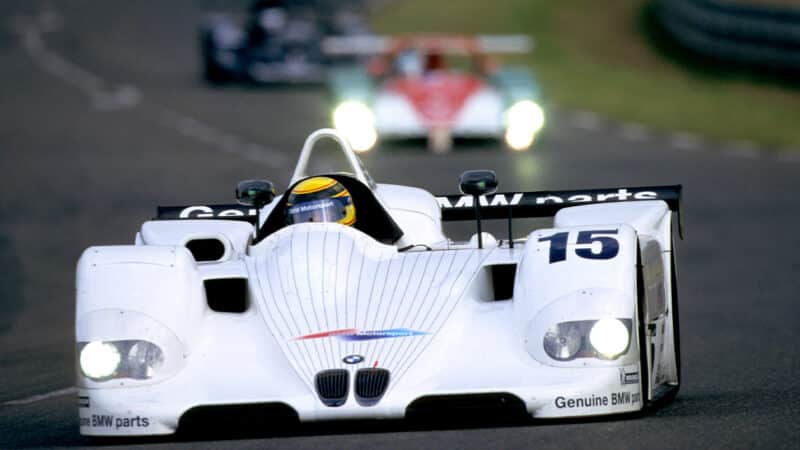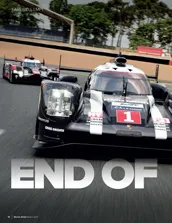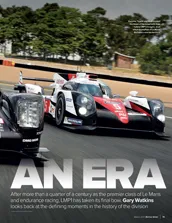“It was a very steep learning curve for everyone. We were a little bit over-ambitious in some areas and the car was overweight. Probably I leaned too much towards my touring car experience and not enough on my F1 experience. But the crystallisation of the team was great, despite the difficult process of building the car so late.
“It ran at Le Mans but we’d only had a shakedown at Snetterton and one run somewhere else, I think – it was all very last-gasp. We retired both cars from the race after about six hours because of front wheel bearing failures. I didn’t think it was in BMW’s best interests either to have an accident or to keep changing suspension uprights and run with the backmarkers. The rest of the car was running pretty well, though, and a lot of its hardware was carried over to the ’99 car.”
Another chance
“We changed our strategy for ’99. The car was simpler and I was helped enormously by Graham Humphrys coming on board as chief designer. He managed the drawing office and I could bounce ideas off him. Aerodynamically the ’98 car was at the right drag level but light on downforce, particularly at the front. BMW employed Peter Stevens to assist us to get the styling cues they wanted without sacrificing aero performance, and that got back the downforce we needed. When we looked back at the original wind tunnel figures for the ’98 car they were very close to what we raced in ’99.
“We exploited a loophole in the regulations with the single roll hoop – something which became standard afterwards. In reality it probably offered only a small advantage; I don’t know for sure because we never did a back-to-back comparison. It worked well with the large engine airbox that BMW wanted because of the way the V12’s induction system worked. It broke new ground and it made the car distinctive.
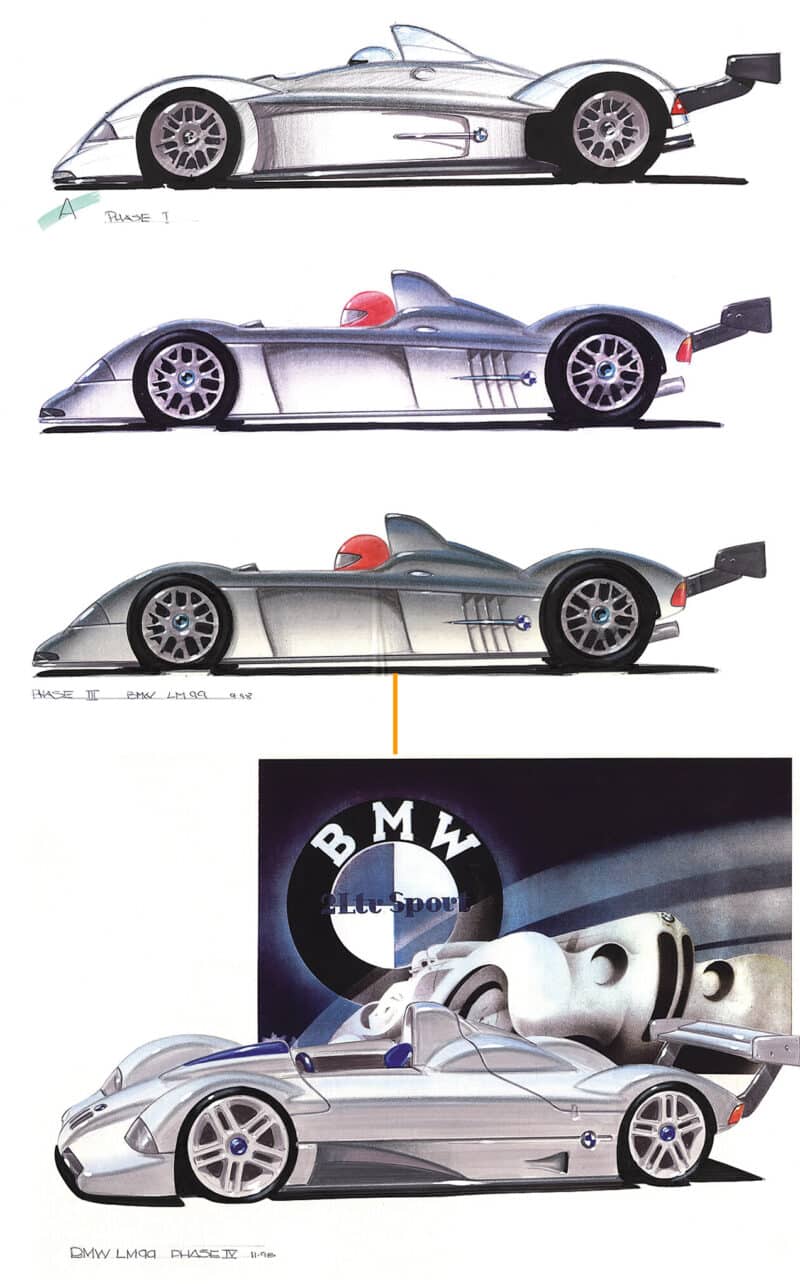
Peter Stevens created a slimmer, sleeker shape for ’99 car, with good aero. From top, progression to final design
Peter Stevens
“The engine didn’t change significantly for ’99 – there was a little bit of development but it was already fantastically torquey, fuel-efficient and reliable. It was also the size of a hospital standby generator and not something you’d choose to put in a racing car! It was essentially the same as the one raced by McLaren in the F1 GTR, although we’d persuaded BMW to take an inch off the sump so we could get it lower in the car. Because of its good fuel efficiency, and the car’s good aerodynamics, we were able to run for 14 laps between refuelling stops and that was a big strategic advantage in the race.
“The whole car was designed for minimum down-time so it was easy to get in and out of, and easy to service. Although we’d only lasted six hours in the ’98 race it was evident that the Hitco brakes were running cool and their wear rate was low. So the objective from day one with the ’99 car was to go through the whole race without changing the brakes, which we achieved on the winning car. I think that was the first time anyone had done that on carbon brakes. We also wanted to triple-stint on tyres but Michelin was a little nervous of that, even though the car was pretty easy on its rubber. So we double-stinted. Our gearbox took 40 minutes to change so that wasn’t an option – we had to make it reliable.
“I already knew there wouldn’t be a 2000 car before Le Mans, and it was announced to the factory before pre-qualifying. It’s a testament to the team that despite that disappointment we went on to win a tight race. I’d tried to persuade BMW to put a diesel engine in the car for 2000 – we already had a chassis that was robust and could take a big engine so it would have been relatively cheap. But BMW made the strategic decision to focus on the F1 project instead.”
